Can’t find your discipline or profession? Write to us and we’ll
do our best to work something out.
Every project is unique.
We adjust our services to your needs.
The Libera Spark ERXR / ERPT is a state-of-the-art electron beam position processor designed for synchrotron instrumentation. It supports the readout from a single beam position monitor (BPM with 4 channels) and processes data in both frequency and time domains. The ERPT version additionally supports the Libera Pilot Tone FE, handling input signals at two RF frequencies. This instrument is capable of real-time data streaming (e.g., at 10 kHz) and integration with machine protection systems (Interlock detection).
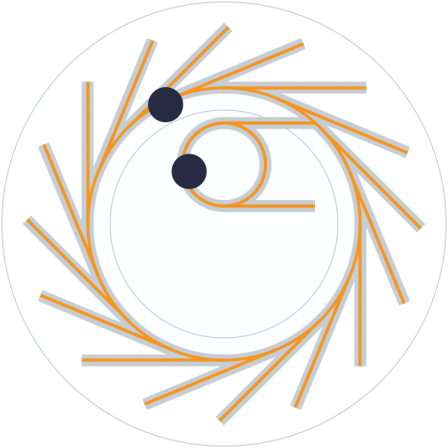
Key Features of Libera Spark ERXR/ ERPT
Libera Spark ERXR/ERPT front panel:
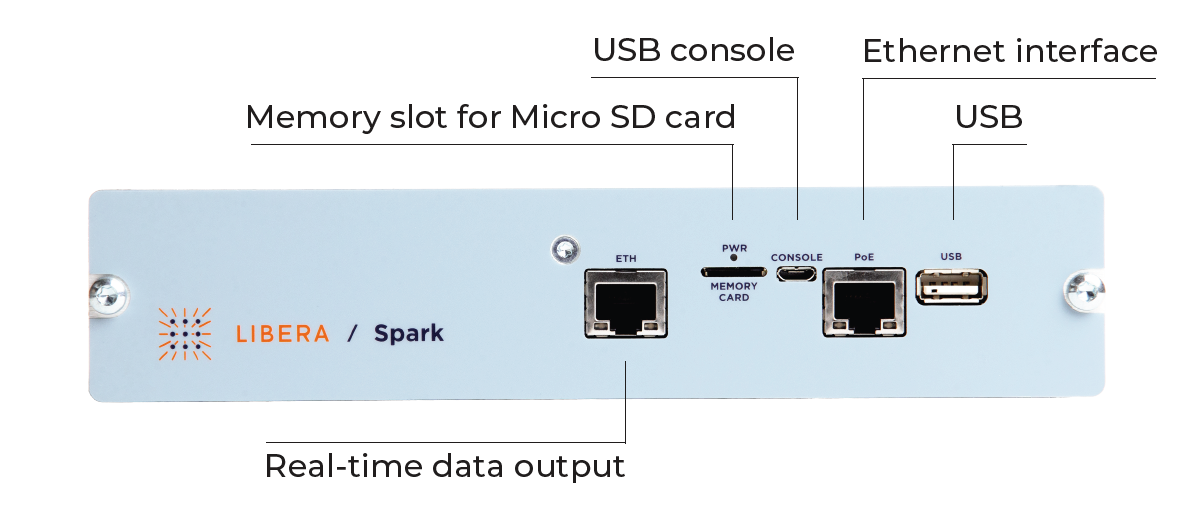
Libera Spark ERXR back panel and Libera Spark ERPT back panel (block diagram):

Signal Processing:
Input signals are sampled at nominal sampling frequency which can be generated internally (PLL-controlled) or externally. A/D converters have 14-bit resolution and support the sampling frequency up to 125 MHz.
The beam position calculation equation can be configured for diagonal or orthogonal pickup orientation and supports scaling and offset parameters. Position is calculated at turn-by-turn data rate and further filtered to lower data rates and bandwidths.
Data from buffers is available to multiple clients in parallel. Additionally, a real-time data stream can be read independently from the CPU and is intended for real-time applications (e.g. feedback loops).
Data Processing:
Signals from the BPM pickups are filtered and sampled at 100-125 MHz PLL-controlled sampling frequency. Raw ADC data is stored in a buffer and further processed through a time-domain processing block (TDP) and frequency-domain processing block (DDC, I&Q demodulation). Optionally, a special instrument’s version supports additional DDC block for pilot-tone signal.

The turn-by-turn processing blocks can be fine-tuned with processing delay, offset and masking window. Turn-by-turn data from both sources is written to circular buffers which accommodate few millions of turns. Data can be read in various modes: triggered, on-demand, with +/- offset, etc.
Turn-by-turn data from the Time domain processing block is particularly useful for machine commissioning and/or measurement of a single-bunch single-turn trajectory.
The Fast and Slow data are both generated from the turn-by-turn data using FIR filters with 2 kHz and 5 Hz bandwidths, respectively. Optionally, the Fast data can be output through a dedicated RJ-45 interface as a real-time data stream.
Software:
Software and FPGA code runs in Zynq 7020 which combines the Programmable Logic (PL) and Processing Subsystem (PS). Libera BASE software framework hosts the application software and establishes communication with the FPGA and upper layer software interfaces. The interface servers are compatible with most common control system interfaces such as:

If we have not yet convinced you, here is a list of benefits SPARK ERXR/ERPT have in comparison with other similar products:
| Libera Spark ERXR | Libera Spark ERPT | |
|---|---|---|
| General product code | LSXR | LSPT |
| BPM Slots | 1 | 1 |
| Supported input frequency range | < 750 MHz | < 750 MHz |
| A/D conversion | 125 MHz, 14-bit | 125 MHz, 14-bit |
| Cooling | Passive | Passive |
| Power supply | PoE | PoE |
| Timing signals | Electrical, 3 inputs | Electrical, 3 inputs |
| Calibration | Manual | Pilot Tone (does not come in the package) |
| Fast data link | RJ-45 | RJ-45 |
| Maximum input signal | < +5 dBm (continuous) | < - 10 dBm (continous) |
| Input gain/attenuation | 31 dB programmable | 31 dB programmable |
| Temperature drift, typical | 2 μm/°C | < 1 μm/°C |
| Position RMS at turn-by-turn data rate | 0.3 μm | 1 μm |
| Position RMS at fast 10 kHz data rate | 0.04 μm | 0.1 μm |
| Position RMS at slow 10 kHz data rate | 0.02 μm | 0.05 μm |
| Position RMS at single bunch | <10 μm | / |
| Position RMS at macro pulse / continuous wave | / | / |
| Dimension | H:1 U, W:9.5" (rack mountable with a kit), D: 210 mm | H:1 U, W:9.5" (rack mountable with a kit), D: 210 mm |
| Libera Spark ERXR | Libera Spark ERPT | |
|---|---|---|
| Bunch-by-bunch processing | No (only single bunch/single turn) | |
| Turn-by-turn processing | Yes | Yes |
| Real-time streaming | Optional * | Yes |
| Slow data | Yes | Yes |
| Gain control | Yes | Yes |
| Multi-chassis synchronization | Reference clock with PLL | Reference clock with PLL |
| Data time stamping | Yes | Yes |
| Interlock detection and output | Optional * | Optional * |
| Postmortem capability | No | No |
| Single-pass measurement | No | No |
| Frequency down-conversion | Direct (with ADCs) | Direct (with ADCs) |
| Additional Digital I/O channels and Analog output | Optional** | Optional** |
| Closed Orbit Feedback Application | No | No |
* Requires additional modules: Libera Spark ERXR: GbE interface, Libera Spark ERPT: GDX module
** Requires additional modules: Libera Spark ERXR: DAI module
Pilot Tone FE is an analog front-end installed in the tunnel and connected between the BPM pickup and PBM electronics.
For demonstration purposes, Libera Spark can be fully controlled with a Qt Graphical User Interface. It uses a netcat utility that connects to Libera Spark via SCPI set/read commands. Check example figures and tutorial videos.
Libera Spark – ADC
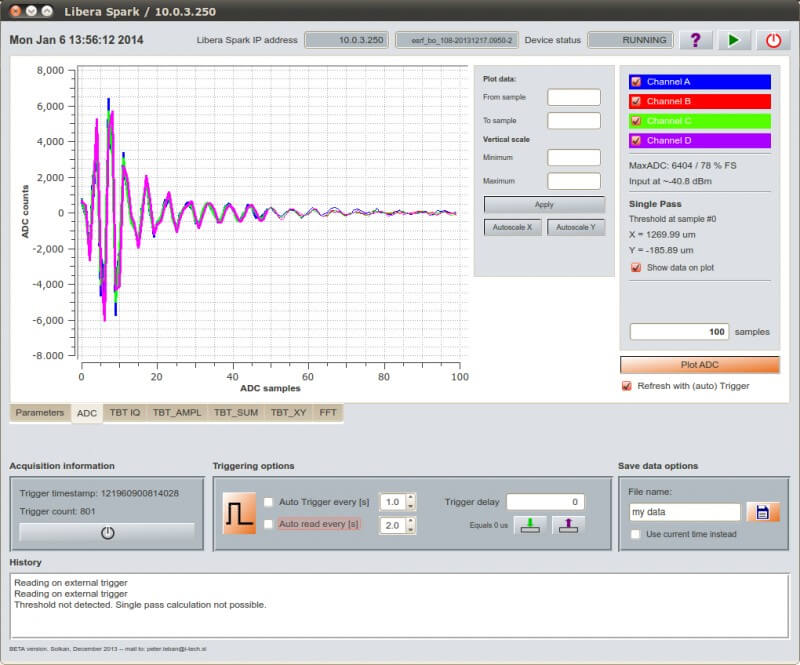
Libera Spark – FFT
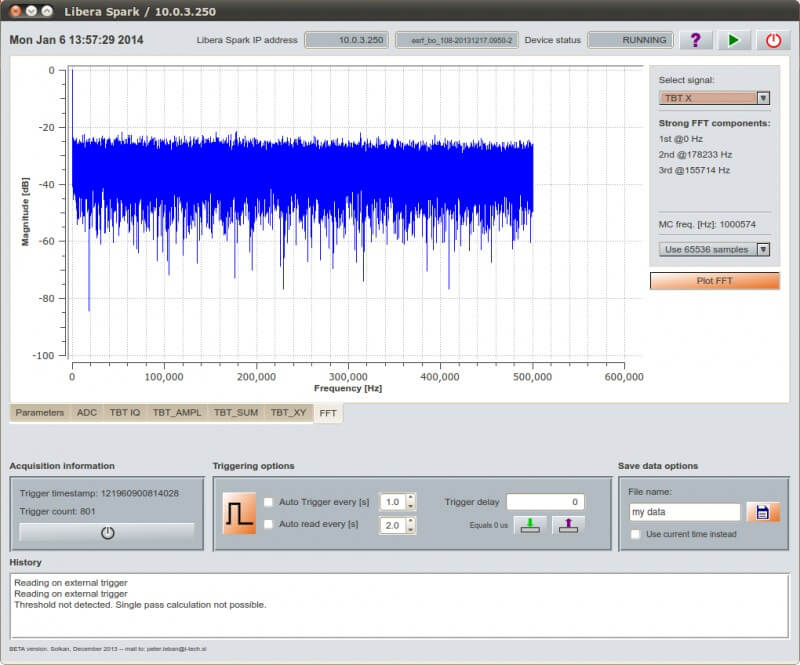
Libera Spark – Parameters
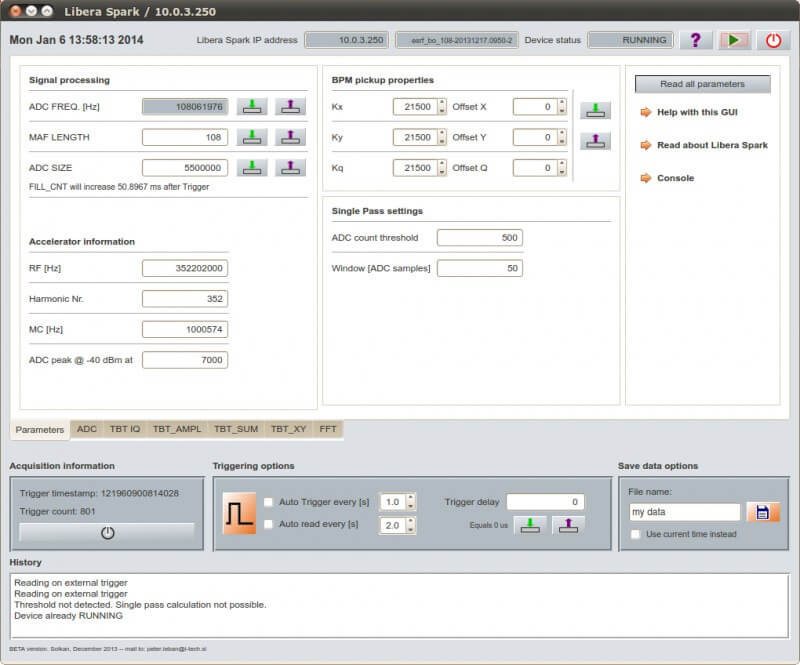
Libera Spark – TBTXY
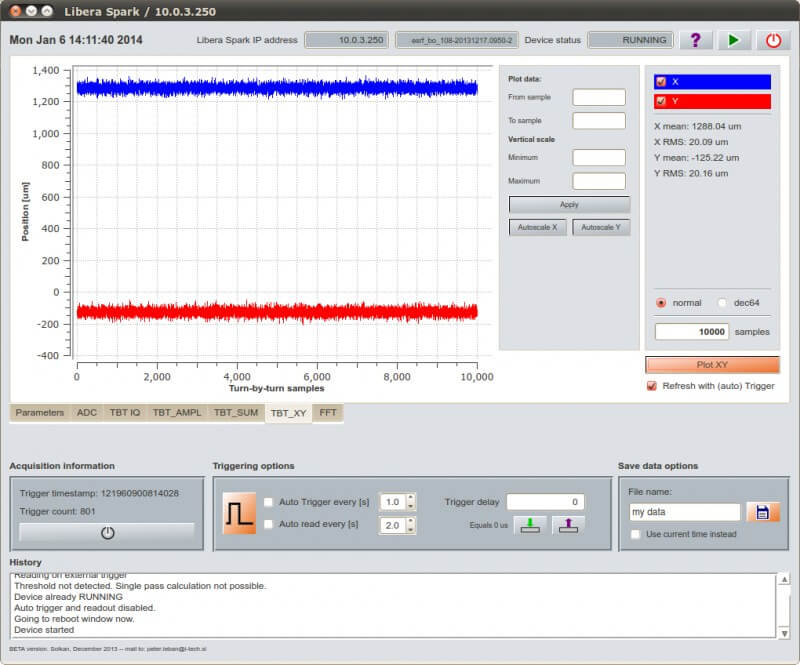
Overview
Getting started with GUI
Set up the custom ADC sampling frequency
ADC data readout
Libera Spark ERXR/ERPT is used at the following labs:
Can’t find your discipline or profession? Write to us and we’ll
do our best to work something out.
We adjust our services to your needs.